Finn is a designer and foresight practitioner with a drive to enable people to shape their collective futures. He creates tangible tools, experiences and participatory foresight processes that help people to imagine and implement their visions of a better future.
Finn is the creative lead on SOIF’s National Strategy for the Next Generation programme, is an NGFP fellow, and the inaugural winner of the NGFP Walkabout Prize where he is using social media to engage young people to think about the future.
Finn is also a visiting lecturer in Global Innovation Design at Imperial College London and is founder of Futurall, a design studio specialising in producing design led participatory futures engagements. He is also a regular public speaker at foresight conferences such as Primer, Futures Festival, and the Global Foresight Summit.
Can you describe your project, “Tomorrowlands”?
Tomorrowland is an open, inspirational, safe space for praxis – physical or virtual – where youths co-imagine radical, preferred futures, produce cultural artefacts of their envisioned futures, and sustainably act on identified projects of interest. Tomorrowlands is funded by the NGFP (Next Generation Foresight Practitioners) to pilot projects in Bangladesh, Brazil, UK, Australia and the Netherlands. The Tomorrowlands project is led by NGFP Fellows Shakil Ahmed, Erica Bol, Rodrigo Mendes Leal, Finn Strivens and Ana Tiquia.
Tomorrowland Community Meet is an open invitation to foresight and futures practitioners working, or interested in working with young people to articulate, explore, and generate pathways towards desired futures. This quarterly series of talks, workshops, and participatory sessions aims to build a community of practice through sharing of outcomes and learnings from youth-centred projects globally.
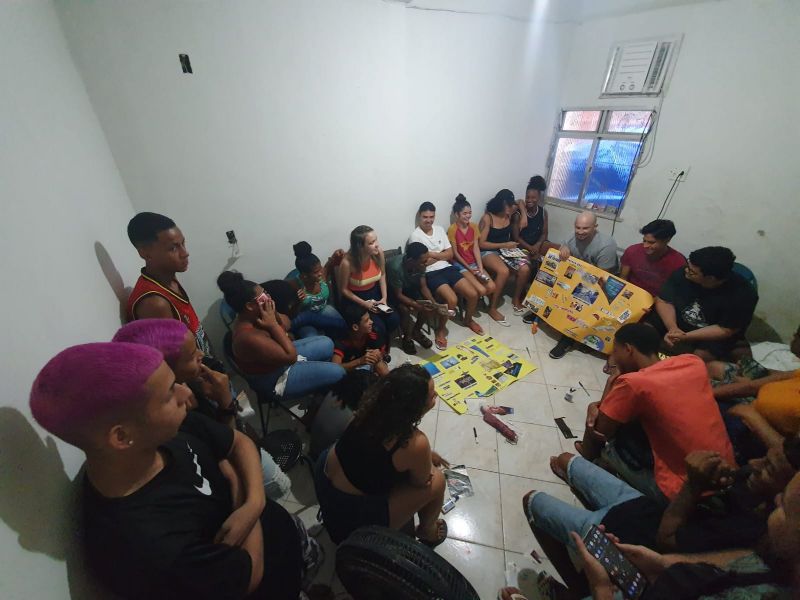
How did your project start and evolve?
Lots of the Tomorrowland work goes back to what Shakil Ahmed wrote in his story as part of a future manifesto with SOIF’s (School of International Futures) NGFP (Next Generation Foresight Practitioners) network, where he talked about someone in Bangladesh walking through their 2050 city and visiting a Tomorrowland, which was a future space for democratic participation. So it’s all framed through a lens about the future of democracy and building new spaces for democracy. Shakil reached out to a number of people in the NGFP network doing work with young people, mostly around creating communities and community spaces to have discussions about alternative futures and, I guess, questioning the dominant narratives that run through our societies and in our media. This is what Tomorrowlands project is about: bring a bunch of people together who want to make sustainable formats for new communities and who use futures methods to try to create these spaces, co-op and adapt different methods for their own uses.
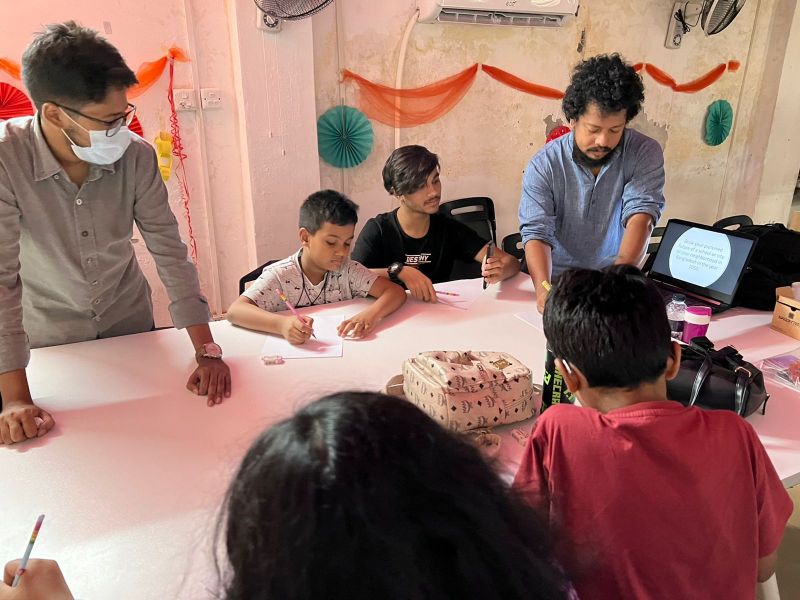
Do you always start from the same story ?
We don’t always start from the story, but I think it would be a nice way to start. It’s a really powerful piece of writing. And it actually communicates the vision for Tomorrowland much better than when we explain it out loud. Maybe as a result of this conversation, this is something I might feedback to the community: “Could we start every community meeting by reading this story and cement ourselves in this future narrative of where we’re all headed together.” Shakil’s story presents Tomorrowland as a physical space, but we understand Tomorrowland as a space we collectively want to make. It could be a virtual space. It could be a wall that has a sort of regularly evolving set of murals that people come to make about the future. It could be any sort of space that we feel is appropriate. Tomorrowland is modular and adaptable.
Who is generally involved in putting the project together?
The five of us together (Shakil Ahmed, Erica Bol, Rodrigo Mendes Leal, Finn Strivens and Ana Tiquia) are putting in place Tomorrowlands in different countries and exploring the impacts of the space we create. We come together to share some learnings about common questions. For example, how to evidence what we’ve done? How to follow up? How to sort of understand the impact on the people who are involved in the processes? How to make some kind of simple shareable set of tools so that anyone else can start thinking about how to make Tomorrowlands in their community.
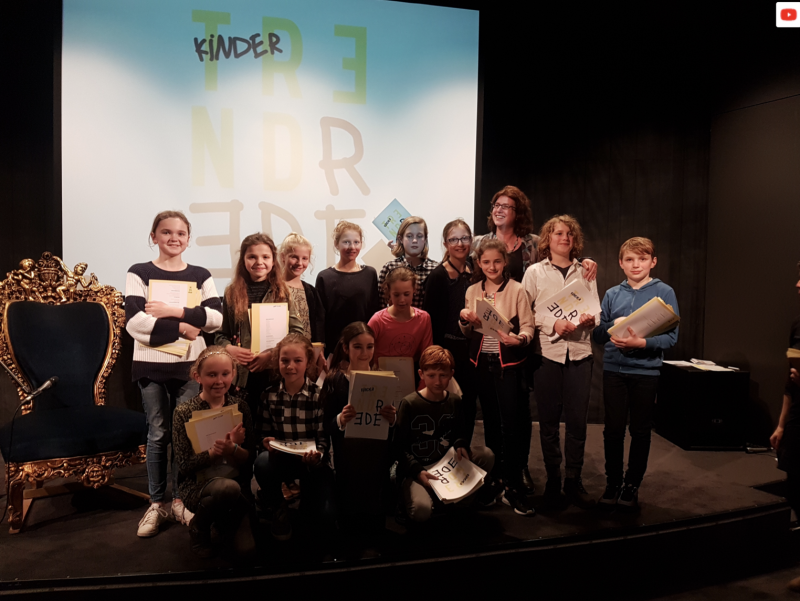
How is it funded?
SOIF has an impact award, which is a 5,000 usdpound grant. The purpose of the grant is to get members of the NGFP network to collaborate with one another. Inspired by Shakil’s initiative, we applied to this grant. We split the grant mostly to cover the costs related to running workshops and supporting the communities that we’re working with.
What publics do you work with, why, and what do they do together?
It very much depends on each project. Erica Bol is in the Netherlands. Rodrigo Mendes Leal in Brazil. I’m in UK. Anna Tiquia is in Australia. Shakil Ahmed is in Bangladesh, and he might be doing it in Singapore as well. Erica Bol is doing a project with Teach The future. It’s running workshops in schools, during school holidays for a group of young people in a local town, who want to come and reimagine the future of their town. They present a sort of manifesto to the mayor of that town. And every summer she runs the same project and sort of recruits a local cohort of young people.
I am doing a project called TikTok futures with different youth groups in London. And I basically find groups by reaching out to them saying, “Hi, I’ve got this workshop format, I’d love to run it with your community”. I try and go into a preexisting community and do something that works with them rather than bringing people together specifically for an activity. I then have a co-design process where we make something that works for the young people I am working with, to make sure it is something that can interest them. I think each different project has a slightly different approach. And then we share what we learn from our different approaches.
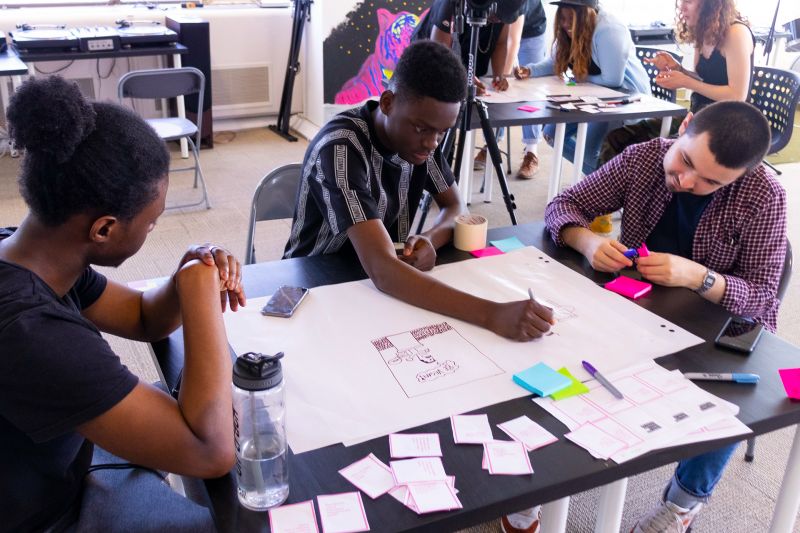
In what ways do you work with arts, fiction and narrative?
I started an initiative called Tik Tok Futures. It’s a workshop format and an ongoing creative community project, all about imagining possible futures with young people. I like to talk about imagining possible futures, I think it is the most open and accessible way of describing our work. I try to avoid any jargonistic language whenever I talk about futures, especially with youth. What the project wishes to do is give young people a sense of agency and optimism over their futures by teaching skills and mindsets effectively in long-term and strategic thinking. The idea is that learning these skills makes the future seem less like something that happens to you and more like something you can shape. We decided to use Tik Tok to reach out to youth who would never even think about attending a workshop or a project called a “futures workshop”. The youth we worked with were actually attracted and interested in learning and developing video making. It also gives them a direct avenue to share their own thoughts and their own feelings as well as have creative control over the final outputs.
For example:
The workshop is usually organized around a question about the future of X, Y, or Z. We start by involving youth in framing a question “What subjects do you want to talk about today?”: the future of music, the future of sport, the future of money or the future of biodiversity… etc. The first part of the workshop is about expressing ourselves about the subject and engaging youth in creatively imagining alternatives.
To start these conversations, I play a game that I’m currently trying to put online and make open source. The game is about matching two random prompts that give a very weird, bizarre future outcome and tell a story about how the world got to that place. The first prompt is some kind of actor or person, and the second prompt is an event. You might get a giant 10-foot rubber duck as your first prompt and the second prompt might be “gives global cancer” or “leaves the earth in search of a better life on the moon”. I also play a game where I put random images about the future inside balloons, and people have to pop balloons to get all their images. And then with five images, you have to tell a story and weave those images into a new set of stories about the future.
We also use quite a lot of video material. I asked them before the workshop to send me links to their favorite features, sci-fi films, or films that present alternative ways of living. We pick out clips from these and try to identify things happening in the present or current trends that could lead to different futures. That way we link back the idea of imagining alternatives to actually being able to see how these could translate into the world we live in at the moment, and effectively teach skills around understanding change, and making change feel more manageable on a day-to-day basis.
Halfway through either the day or the process, I’ll introduce sets of future scenarios. A couple of lines on each to stretch the young people into very different directions and have a collective session where we discuss what each of these worlds might look like in a bit more detail, and then ask them to pick one of these future worlds. We then have a story board session where we, as a group, come up with lots of ideas about what sorts of narratives we want to communicate about futures, what different stories we might want to tell in these worlds and who we might want tell…
TikTok is really used as a sort of energizer as much as anything else; whenever young people start to create, the energy levels soars up in the room. I find it really interesting and very pertinent to use platforms that youth are used to. For some, it’s something that’s part of their everyday life, and it gives the platform another use. Others have never used TikTok before and they come to the workshop to learn how to use it, as well as cool techniques about how to make TikTok videos.
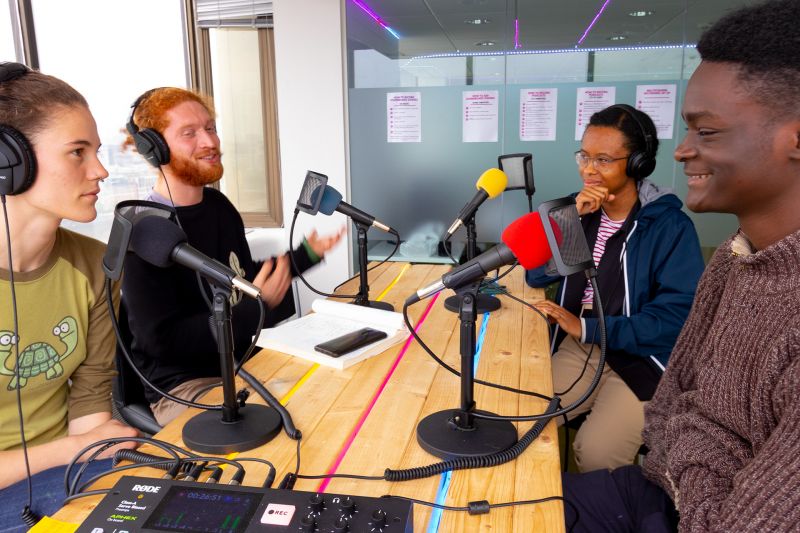
What change(s) would you like the project to produce for the participants?
In many ways, the change for the participants sort of comes at a number of levels. For example, Sirlute, which is one of the youth groups I’m working with at the moment, specifically works with disadvantaged youth and at-risk young people. Their mission is to use creative programming to minimize destructive behavior and reduce crime in communities. I believe there’s a basic level to which providing programming for these young people is really important, to help them have other things to do with their holidays. Salute just moved location and the location is incredibly important: many of the young people in the groups are part of gangs and although the previous location was great, half of their members wouldn’t be able to come because they would enter another gang’s territory and they’d risk being attacked on the way there.
I think that a set of skills about being strategic and thinking long term, just understanding that multiple futures are possible, can give people a sense of agency that in many cases, young people don’t feel. For me, building skills in strategic thinking and understanding long termism, as well as helping people have fun and engage in activities, are both very important and necessary actions that lead to change.
And beyond the participants (for a community, an organization, for the world…)?
For the longer term, I would love that the SOIF initiatives and projects solidify a national strategy for the next generations and build a long-lasting high-level dialogue with young people around the UK.
The goal of a lot of SOIF’s work is to do foresight with impact. To think and learn about how we can communicate future narratives in a way that is hard hitting and memorable. One of the ways that seems to be continuously most effective is directly appealing to the heart as well as the head, and to have young people articulating things for themselves.
One of our questions is about bringing in more diverse audiences of young people into complex conversations about the future. One of our learning goals is to host conversations in spaces that the community controls and is comfortable in. I see this as an experiment and a chance to find new learnings by using youth friendly media formats that explore with and appeal to audiences who wouldn’t want to come to a workshop about the national strategy of Great Britain.
This is also a way of exploring how to communicate future narratives in short formats where young people have the power to shape and share their voices easily and directly with someone who’s in a sort of decision making or more powerful position.
How do you know you have succeeded? Do you have evaluation methods?
In terms of evaluation, there’s the experiences of the young people. At the end of the session, we have a moment to discuss with them what they enjoyed and what they didn’t. I also try to encourage the “leader” of the youth group to do the same when I’m not there; it’s really important to have feedback without me in the room. This is possible because I come into a preexisting community that regularly meets, so the space already exists. When I’m not convening, they are still convening themselves and they can reflect on the session without me.
For example, one of the goals in the TikTok videos project was that they directly translate into some form of output, which would be provocative and useful for policy making audiences. (The very first instance of this workshop was partially funded by the European commission, where I was a maker in residence). The idea behind this residency was to create some kind of output. The TikTok videos would be provocative future visions that could be shared with the joint research center of the policy making community on biodiversity, which was a really nice idea. Nevertheless, the result was not at all what we expected. All of the TikTok videos the young people ended up making were incredibly bizarre, sort of wild and strange. They had huge amounts of fun making them, but they didn’t deliver clear messages in any way, shape, or form. As a European policy maker watching those videos, I suppose you would just think: “My God, what has gone on there? I don’t understand a word of it.”
That was absolutely fine for me because I think it was much more about the experience of the participants and the richness of their imaginings than it was about translating to a formal audience. It’s made me revise what my goals are: TikTok videos are great tools to unearth new ideas and bring in new audiences to this space, more than communicating clear ideas and messages. So creating clear messages might not be the focus of this work for now. I’m also hesitant to try and formalize these videos too much, there’s a risk that they’ll lose their weirdness and creativity which in many ways is at the core of why they’re so valuable.
Are there references you’d like to share (e.g., theoretical references, precedents, other projects that inspired you, etc.) ?
An early inspiration is the Extrapolation Factory operators manual, and many of the projects included within it. It is a short, inspiring and open access way to learn about futuring with communities.
Project
SOIF’S NGFP’S Tomorrowland: FOCUS ON TIKTOK FUTURES
Description
TikTok futures is a workshop format that helps young people to imagine possible futures. By handing young people a camera or phone and telling them to film their own future visions, it enables them to directly share their voice with their peers, and to add to a growing number of youth future visions on TikTok. In the workshop, Tik Tok is first used as a worldbuilding tool; young people imagine what kinds of social media videos they will see in different future scenarios. Then young people make their own speculative videos to share with their peers and beyond. By placing creative authorship into young people’s hands this project helps them to share and to shape their own visions of the future.
Website
https://tiktokfutures.com/tik-tok-futures
Interview conducted by Chloé Luchs